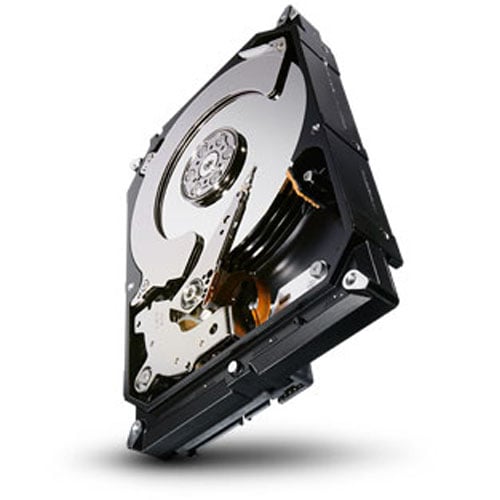This article is more than 1 year old
Belgian upstart to 'bridge gap' between object, block storage. Or that’s the plan at least
Blockject? Watch out, VMware 'n' pals
Interview Belgian startup incubator Cloudfounders is working to have a pool of Seagate Kinetic drives provide block storage for virtual machines, as traditional object storage can't cope? Er, what gives?
What gives indeed with this Cloudfounders Open vStorage project. We asked Wim Provost, the product manager for Open vStorage, to answer some questions about thus and clarify what's going on, and why.
El Reg: What is the block storage for VM problem that you are aiming to solve?
Wim Provost: We are bridging the gap between block storage and object storage. With Open vStorage we have built technology which has the features of high-end SANs (performance, zero-copy snapshots, thin cloning) but is also scale-out and low-cost, like object storage solutions. Open vStorage combines the best of both worlds. With Open vStorage you can seamlessly scale your storage by adding more disks. This is especially easy with the Kinetic drives as they really are just a bunch of disks.
We wanted to develop the fastest VM storage for OpenStack

Seagate Kinetic disk drive
El Reg: What is Open vStorage developing as a product?
Wim Provost: Open vStorage is the open-source software project. CloudFounders, the corporate sponsor behind Open vStorage, uses this technology to build private and public clouds. Our product is a converged OpenStack appliance which will be GA in Q1 2015.
The hypervisor nodes will be equipped with SSD Tier 1 storage and Tier 2 storage will be separate small nodes. This allows users to scale compute and storage independently, but still have the performance benefit of the SSDs. We selected small nodes as this allows us to improve the availability. With 60 plus drives in a chassis, the chassis becomes a single point of failure again.
This converged OpenStack appliance will be offered as a managed solution for resellers who do not have the knowledge in-house to maintain an OpenStack environment.
El Reg: What is Open vStorage?
Wim Provost: Open vStorage is a software solution that offers a block-based interface to Virtual Machines while using object-based storage or Kinetic drives as Tier 2. To ensure the performance it uses the SSDs and PCIe flash cards inside the host as Tier 1 storage. We have implemented this tiered approach because we wanted to develop the fastest VM storage for OpenStack.
Open vStorage creates a unified, single pane of glass on the storage and abstracts the storage-specific behaviour from the hypervisor. For the hypervisor it looks like it is using shared storage such as a NAS. This means that high availability features such as Live Migration are supported out of the box.
El Reg: What makes Kinetic drives better than standard disk drives for block storage in your application?
Wim Provost: They're not better or worse than a traditional disk. They are a traditional disk with a different interface, a key/value interface. It is this key/value interface that makes these drives convenient and an ideal choice for our solution. These drives are addressable via IP, which means we are literally managing a pool of disks independent of where the disks are in the rack.
El Reg Why are you are working on a project to turn a pool of Kinetic drives into block devices for virtual machines (VMs)?
Wim Provost: We need this functionality internally. CloudFounders, the sponsor of Open vStorage, has a hosted private cloud offering (FlexCloud) where resellers own the hypervisor nodes (dedicated RAM/CPU) but use a shared storage backend. This is now running on a traditional object storage solution.
We have stretched the solution as far as we can but there are limitations. Front-end latency becomes an issue and latency is key when you are running VMs. There is also a huge cost in both hardware and management of the head/proxy nodes of the object store. We also need some special features, such as partial object retrieval, compression and encryption which isn't available in many object storage solutions. All these solutions also use a file system on the nodes where objects are stored.
As we are dealing with relatively small objects, the file system metadata would explode. All these issues lead us towards building a custom solution on top of the Kinetic drives. These drives are a bit more expensive but the cost of the whole storage node is total-cost-of-ownership-wise less expensive. On the hypervisor nodes we only need a small layer which has a block interface and uses the SSDs as Tier 1 storage, and when data is evicted spreads the data in an encrypted and compressed form on the Kinetic drives.
+Comment
This sounds interesting. If you are sympathetic to, and supportive of, OpenStack then we suggest you pay attention to Cloundfounders and what it intends to ship in the first quarter of next year. ®
